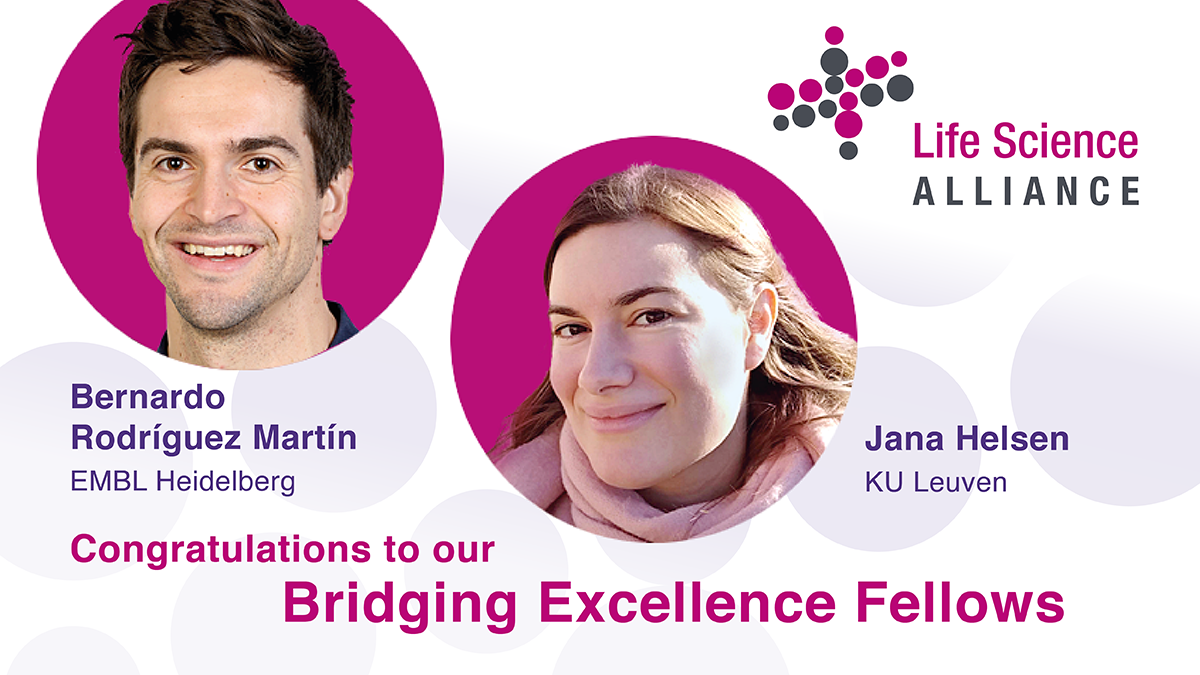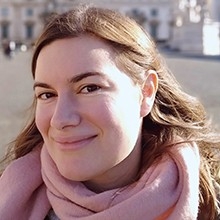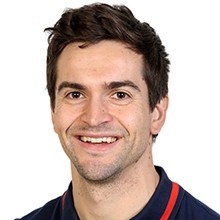Inaugural fellowships awarded to postdocs working at the forefront of biology

We believe that great leaps and advances in biology are achieved by working together. The past year has shown us how collaboration is the cornerstone of scientific progress with teams of international experts working together to map every cell in the human body, fight a global pandemic, and find cures for rare diseases. This concept lies at the heart of our Bridging Excellence Fellowship program – which seeks to enable collaborative research and provide a platform for younger scientists to launch their international careers. Our postdoctoral fellows are the catalysts for joint research endeavors between two leading institutions, combining the best methods, resources and know-how for their cutting-edge research projects.
We are excited to announce the first Bridging Excellence Fellows kicking-off their transatlantic projects this year:

Jana Helsen, with Gautam Dey (EMBL) and Gavin Sherlock (Stanford)
“Cell cycle adaptation to aneuploidy: how do cells adapt to carrying an extra chromosome”
While all eukaryotes undergo cell division, different mechanisms have arisen across species to organize and remodel the nucleus for replication. Jana’s project builds on her knowledge of evolution to study this complex phenomenon and identify the fundamental rules that direct nuclear organization and cell division. By introducing a synthetic chromosome into yeast, she will assess how yeast cells respond to the challenge of packaging extra genetic material. Using experimental evolution and cell biological profiling, Jana’s work will shed light on the different solutions that cells evolve to compensate for aneuploidy, and how this affects organization of the nucleus and cell division machinery.

Bernardo Rodríguez Martín, with Jan Korbel (EMBL) and Alex Urban (Stanford)
“Integrated analysis of mosaic structural variation in human skin”
Bernardo brings his expertise in computational biology to study genetic mutations that arise in the cells of a living organism – the somatic cells. Bernardo will be developing powerful computational methods to map and characterize structural variants (deletions, insertions and inversions in DNA) that arise in somatic cells, leading to a mosaic architecture as these go on to divide and develop within healthy tissues. Advances in sequencing technologies and methods to study single cells, will allow Bernardo to investigate the impact and evolution of these mosaic structural variants in healthy skin, with platforms that can then be harnessed to study these genetic features across multiple human tissues.
A new generation of transatlantic scholars
Lars Steinmetz, Director of the Life Science Alliance is excited to see the first cohort of transatlantic fellows begin: “I’ve benefited from rich scientific and personal experiences at both institutions and I’m excited to hand over the torch to our fellows, see them forge new directions in their own research, and be the next ambassadors for collaborative science.” Bridging Excellence Fellows are awarded a three-year fellowship, spending two years at their host institution and one as a visiting fellow in the collaborator’s lab. Funds are provided for their research, the international visits, as well as attending an international conference to share their work on the world stage.
Bernardo, who has his first experiences at EMBL already is looking forward to taking his research to the next level: “Excellent training and mentorship, cutting-edge technologies, international mobility and collaboration between top notch institutes are usually ingredients for exciting science. What makes the Bridging Excellence program special is that it provides all this in a single package”. Having just successfully defended her PhD, Jana is looking forward to the next step in her career: “I feel like I’m getting the best of two worlds. I get to work on a project I love, while being able to connect with researchers across different continents, and use exciting new technologies at two world-leading institutions. I can’t wait to start this amazing collaborative project!”
If you’d like to join us as a Bridging Excellence Fellow, applications open in Spring 2021. You can read more about the fellowships here and follow us on twitter @LiSciAlliance for the latest notifications!
Related links
Dey group (EMBL), Sherlock lab (Stanford), Korbel group (EMBL), Urban lab (Stanford)
Project page: “Cell cycle adaptation to aneuploidy“
Project page: “Integrated analysis of mosaic structural variation in human skin“